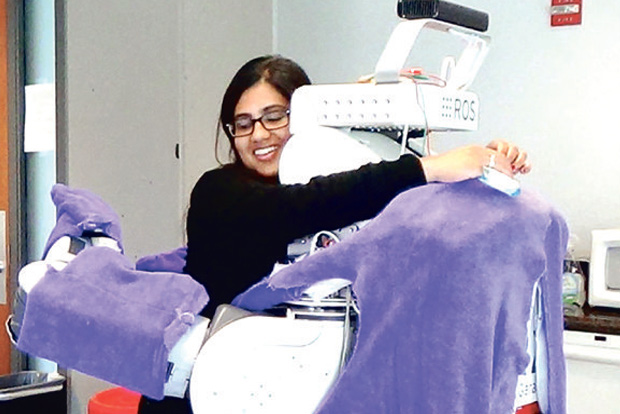Begin typing your search...
Personal Spaces: When we can hug again, and remember how it works
Alexis Block was worried that the robot she’d built was malfunctioning. She was testing the optimal hug duration for her “HuggieBot 1.0,” a purple-furred, on-demand squeeze machine.

Chennai
Block had built pressure sensors into the machine’s torso, so if the human tester tapped or squeezed the robot on the back, it let go. But this hug was going on and on. “I worried the pressure sensors were malfunctioning,” she said.
Her palms began to sweat (getting stuck in the clutches of a giant robot is no one’s idea of a good time). But then, the hug ended, and the HuggieBot released its test subject. When Block, who is working toward her Ph.D. at the Max Planck ETH Center for Learning Systems in both Stuttgart, Germany and Zurich, Switzerland, asked the subject if something had gone wrong, he surprised her by explaining that he had wanted the hug to last a long time. “He said, ‘I just needed it, and the robot wasn’t going to judge me.’”
As the weeks of coronavirus quarantine stretched into months, hugs are among the many things isolated people found themselves aching for. Hugs are good for humans — perhaps more valuable than many of us realised, until we found ourselves missing them.
Research has shown that hugs can lower our cortisol levels during stressful situations, and can raise oxytocin levels and maybe even lower our blood pressure. A 2015 paper published in Psychological Science even found that study subjects who got more hugs were less likely to get sick when exposed to a cold virus than those who weren’t hugged as often. “The need for human contact is extremely profound,” said Judith Hall, a psychology professor emerita at Northeastern University who researched interpersonal touch at the university’s Social Interaction Lab. But whether to hug someone or not sometimes seems fraught.
Not everyone enjoys having their body squished against yours. Which brings us to the first rule of Hug Club: You don’t have to hug anyone you don’t want to, and it’s best to ask before going in for a squeeze — especially if it’s someone you don’t know well. While, of course, you can simply say, “Can I hug you?,” Dr Wendy Ross, the director of the Center for Autism and Neurodiversity at Jefferson Health in Philadelphia, said a better way to ask is: “Some people like hugs, some don’t. What do you prefer?” This framing makes the question about the other person’s preferences.
Dr Ross noted that asking for consent for interpersonal touch is crucial in our neurodiverse world. While some people, both on and off the autism spectrum, find comfort in touch, others are uncomfortable with it. “We’re all on the human spectrum,” she said.
The good news is that once you’ve established that your hugging partner wants a hug, you’ll probably pick up on cues as to how long it should last. Sabine C Koch, a psychologist and dance movement therapist, who also studies embodied communication and body rhythms at Alanus University in Bonn, sent graduate students out to train stations and student unions to watch as people hugged, paying attention to what happened right before the two parties separated. The students noted that hugs shifted from soft, “round” movements into a series of pats on the back — which she calls a “fighting rhythm.” Right after the pats started, the hug ended. “In most of the cases, people first of all have this very soft hug, and whenever a certain time was passing, they started to pat on the back and then they separated. This was true for all combinations of women with men and women with women,” she said.
AC Shilton is a writer with NYT©2020
- The New York Times
Visit news.dtnext.in to explore our interactive epaper!
Download the DT Next app for more exciting features!
Click here for iOS
Click here for Android
Next Story



